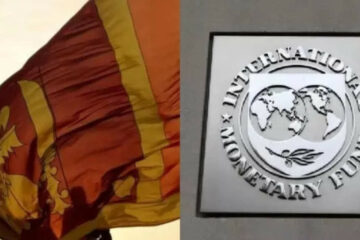[ad_1]
To domestic investors, it means earlier hopes of a slowdown in the pace of Fed rate hikes are dashed, which may boost dollar and US bond yields and put pressure on the rupee and foreign flows to India. It may, however, not have any major impact on the domestic economy.
On Monday, the market was seen factoring in Powell’s remarks that the Fed policy will “cause some pain to households and businesses” and this is “the unfortunate costs of reducing inflation”.
The market rally recently was led partly by foreign inflows as a fall in US CPI inflation to 8.5 per cent in July from 9.1 per cent in June had raised hopes of policy easing ahead. The fresh development is dampening and could revive fears of foreign equity outflows that still stand at Rs 1,63,115 crore so far in 2022.
Sandip Sabharwal of
asksandipsabharwal.com said there was a belief in the minds of a majority of market participants that the tightening by the central banks will not be very severe and they will hike rates aggressively two-three times only to eventually hold them later.
“That entire theory has gone into a sort of disarray now. We also need to recognise that September will be the first month where the balance sheet reduction will become more aggressive. From a $30-35 billion reduction every month, the Fed would reduce the balance sheet to up to $95 billion per month from September. So monetary tightening combined with liquidity withdrawal together has never happened in the past. On the economic front, the impact might be lesser but on the valuations of global risk assets, the impact can be more drastic,” Sabharwal told ET NOW.
We need to be careful in the next two months, he said, adding that there is no harm in being a bit patient and watching and relating the things way out.
V K Vijayakumar, Chief Investment Strategist at
said a sharp rise in the dollar index above 109 and the 10-year bond yield spiking to 3.1 per cent are negative for capital flows to EMs like India. FPIs are unlikely to continue buying in India in this scenario, he said.
“The ‘buy on dips’ texture of the market is unlikely to hold. Investors should not rush in to buy the dips now. Better wait for the dust to settle.”
Morgan Stanley said Chair Powell provided little explicit guidance on the near-term path. While the Fed said it is strongly data dependent, Morgan Stanley sees an increased risk of a 75 basis points rate hike. For now, it is expecting a 50 bps rate hike as a base case for now. Piper and Sandler said Powell did not give the impression that Fed will revert to the traditional 25 basis points anytime soon.
“Powell is not budging on having a restrictive policy and that should mean the economy will steadily weaken going forward. Powell drove home the point that when they are done raising rates, we should expect them to stay there for a long period of time,” said Edward Moya, Senior Market Analyst, The Americas OANDA.
“There was no dovish pivot, but it seems financial markets are getting close to fully pricing in the remaining Fed rate hikes. The downside for equities may remain limited if inflation pressures continue to ease sharply,” Moya said in the US market context.
Anand Radhakrishnan of Franklin Templeton said there is a significant challenge and the market has to climb the wall of worries into the next three-six months before we can clearly call out. “Market will every now and then try to hazard a guess and therefore we should be prepared for that amount of volatility,” Radhakrishnan told ET NOW.
(Disclaimer: Recommendations, suggestions, views, and opinions given by the experts are their own. These do not represent the views of Economic Times)
[ad_2]


